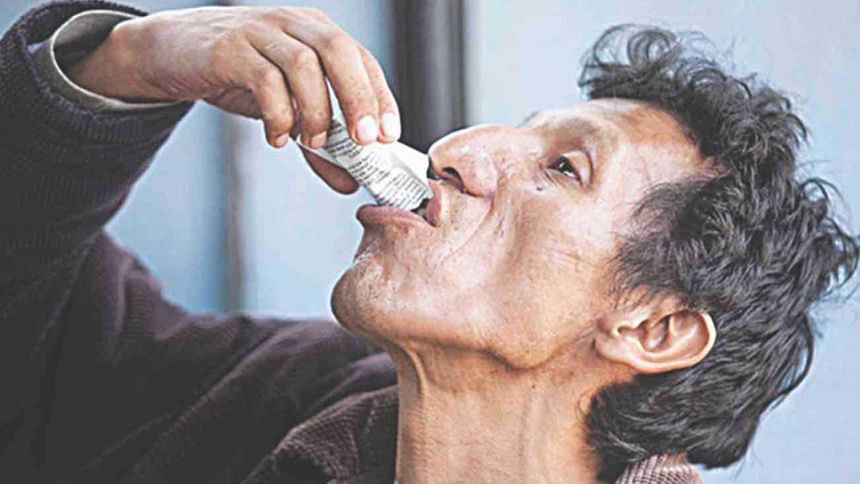Targeting higher hanging fruits

BANGLADESH'S recent socio-economic progress has attracted wide attention globally. In an article, the editor of The Telegraph, India reflected on how Bangladesh has weathered all odds and is now able to proudly move forward. He compared Bangladesh's achievements to that of his native state, West Bengal and lamented how the latter was falling behind. A host of such writings and on how the rest of the world can learn from this is appearing regularly in global development literature. David Lewis, a professor at the London School of Economics,wrotein a recent book, “Once written off as a basket case, Bangladesh is now spoken of as a basket of innovation.” The prestigious British medical journal, Lancet, published a series on Bangladesh. In introducing the story, the editors termed the gains in Bangladesh as 'one of the great mysteries of global health.'
Bangladesh indeed has done exceptionally well despite its perennial limitations. It is one of the few countries which are on track to achieve both MDGsfour and five. Life expectancy,which is the average number of years a person in a given societyis expected to live,has increased by 70 percent since independence. In 1971, the life expectancy was just over 40 years and now this reached to nearly 70 years. Interestingly, women have benefited more. Until the 1980s, Bangladesh unfortunately was one of the few countries in the world where women lived a shorter life than men. This has now been reversed, with women living longer than men. In terms of health, Bangladesh's record is exemplary. The country has reduced its infant mortality rate tremendously, from 150 in the early 1970s to less than 50 now. Similarly the maternal mortality ratio has decreased from about 600 to less than 200. This is quite remarkable since it challenges the conventional wisdom that maternal mortality is directly related to availability of skilled attendance and facility delivery - both of which are lacking in the country. Bangladesh's achievement in fertility control is even more dramatic. The total fertility rate has reduced from about 7.0 in the early 1970s to 2.3 in 2010. In some areas such as Khulna, the 'replacement level' has already been reached.
Bangladesh has accomplished some public health miracles. Take the case of immunisation. In mid-1980s only 2 percent of children were vaccinated. With the government's commitment, and engagement of civil society organisations, development partners and the media, this climbed to 70 percent in a mere five years, which prompted Unicef to call it a 'near miracle.' Diarrhoea was a major killer of children and oral rehydration therapy (ORT) - the treatment of choice - was not available to the people. BRAC, with technical support from ICDDR,B carried out a decade-long arduous campaign to teach mothers how to prepare itfrom salt and molasses. Due to such intensive effortsand subsequent involvement of the public and private sectors,the usage rate of ORT in Bangladesh is now the highest in the worldand has become a part of the local culture in the sense that mothers transmit the knowledge to their next generation. Our success in family planning is well known and is a cause of envy for many countries.

Bangladesh is a high burden tuberculosis country. The directly observed treatment - short course or DOTS - the recommended therapy for TB, has made impressive progress, exceeding the WHO target of both case detection and treatment completion. In Bangladesh the government and NGOs work very closely and the national TB programme is a perfect example. The above achievements make us proud. But what about the future? Keeping the momentum going will require a good understanding of the unfinished agenda and the future challenges. It is true that we have done well compared to some of our economically better-off neighbours. But we are still lagging behind Sri Lanka in terms of most indicators. Sri Lanka's maternal mortality ratio, for example, is less than 30. The challenges are many and formidable. The decline in some rates such as neonatal mortality has unfortunately been very modest.
With many of the contagious diseases still persisting, we are faced with a double burden. The epidemiological and demographic transitions are bringing the non-communicable and life-style related diseases such as diabetes, hypertension and cancer into the fore which is further exacerbated by the ageing of the population. Threats from the newly emerging infectious diseases such as Ebola, Nipah virus, Bird-flu, etc. are real. Unfortunately our health system is hardly prepared for these. Human resource is an unending problem with shortages, misdistribution, skill imbalance and malfunction. Public investment in health is one of the lowest in the world here. 63 percent of the expenditure is out-of-pocket and limits a citizen's access to quality healthcare, and increases poverty. Lately, there have been some policy guidelines for achieving Universal Health Coverage by 2032,but no headway is in sight. Governance of the health sector is a continuing issue mired with raging corruption and wastage of resources. There has been a limited success in reducing malnutrition. Bangladesh has one of the fastest growing urban settlements and about a third of this lives in slums. But there is little attention given on how to deal with this. NGOs are also working in urban slums but there is hardly any co-ordination with the public sector or between themselves. Environmental pollution and climate change will likely worsen vulnerability, particularly that of the poor. Issues such as arsenic in drinking water, unfortunately, remain neglected or forgotten. The gains of the past years are considerablydue to gains in some of the social determinants of health. Poverty persists - about a quarter of Bangladeshis are still poor by any standard. Income inequality is high and is not reducing. Child marriage is rampant and a shamefully – 60 percentof girls are married off before the age of 18 - the highest in South Asia. Drowning and road accidents continue to add to the number of deaths and injuries but no effective strategy is in place to tackle them.
Over the past few decades we have successfully harvested the 'low hanging fruits' but addressing the unfinished agenda and future challenges, the 'high hanging fruits,' would require fresh commitment, innovative thinking, concrete efforts and higher investments. As Amartya Sen wrote, 'The key to Bangladesh's laudable success has been the avoidance of the twin dangers of inertia and smugness. The future will demand more from these virtues'. Withthe rightattention given to the issueshold us back, we can accelerate our gains many folds.
..............................................................
The writer is Vice Chair of BRAC and Professor of Population and Family Health, Columbia University.

 For all latest news, follow The Daily Star's Google News channel.
For all latest news, follow The Daily Star's Google News channel. 



Comments